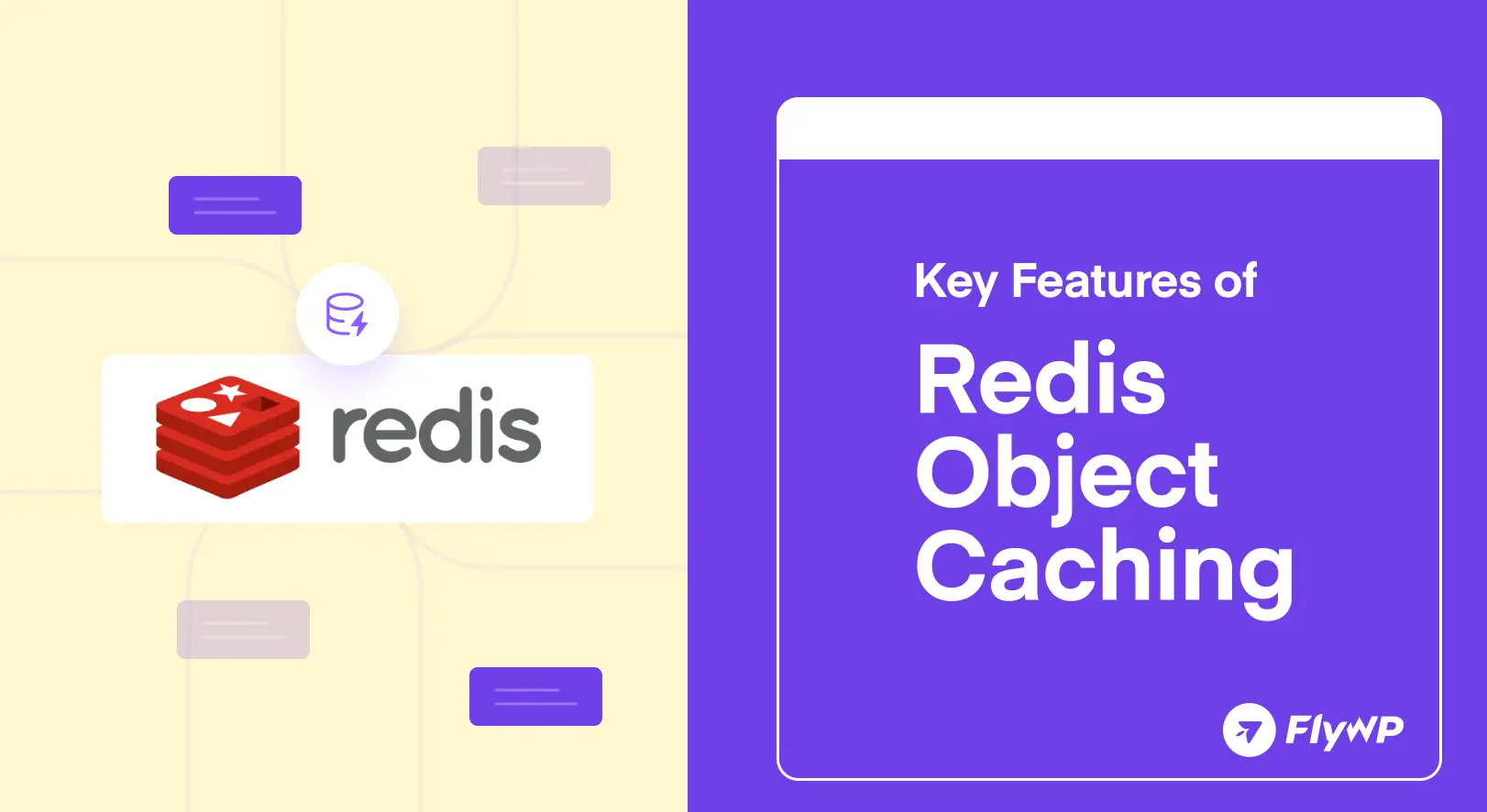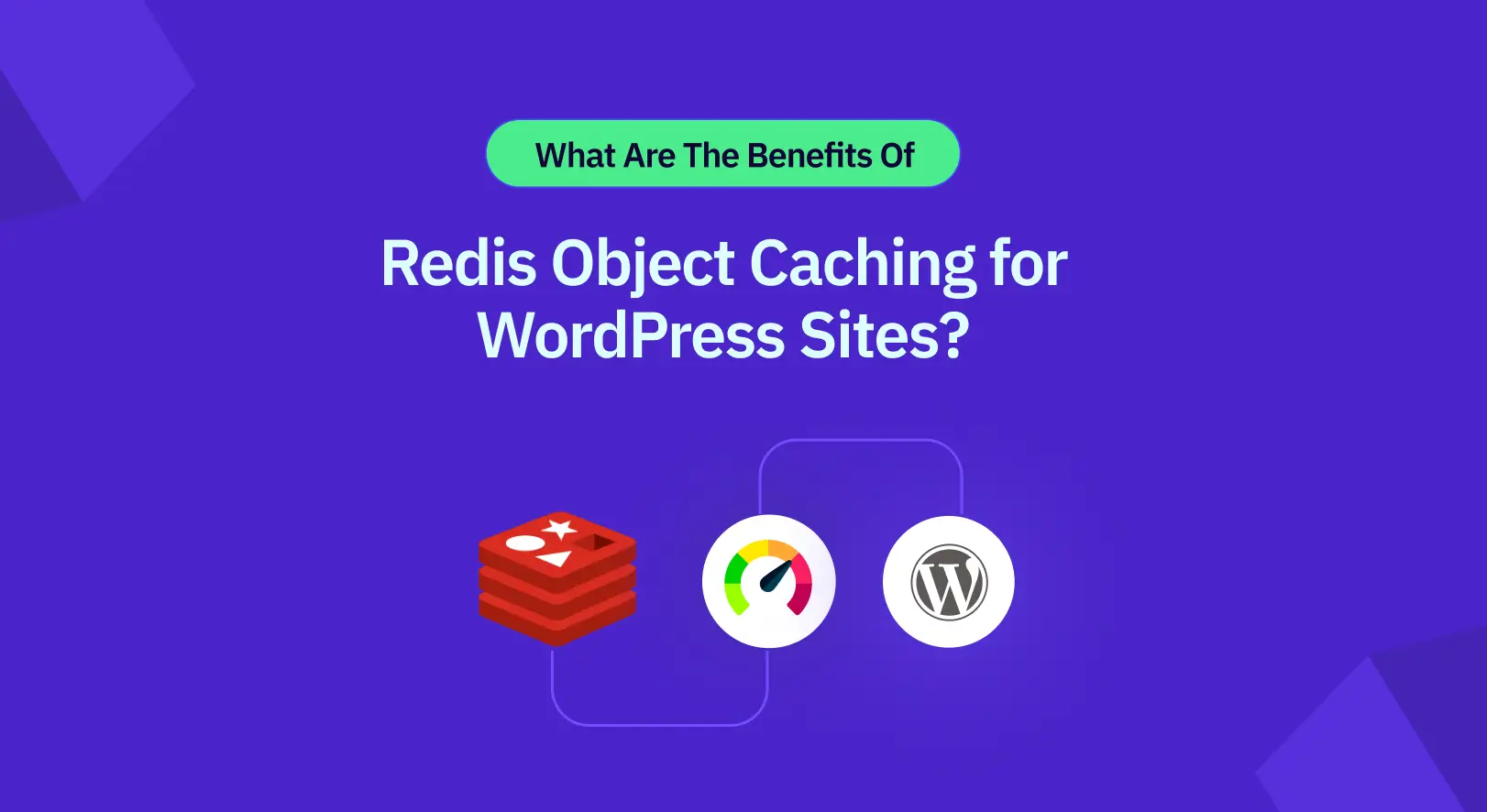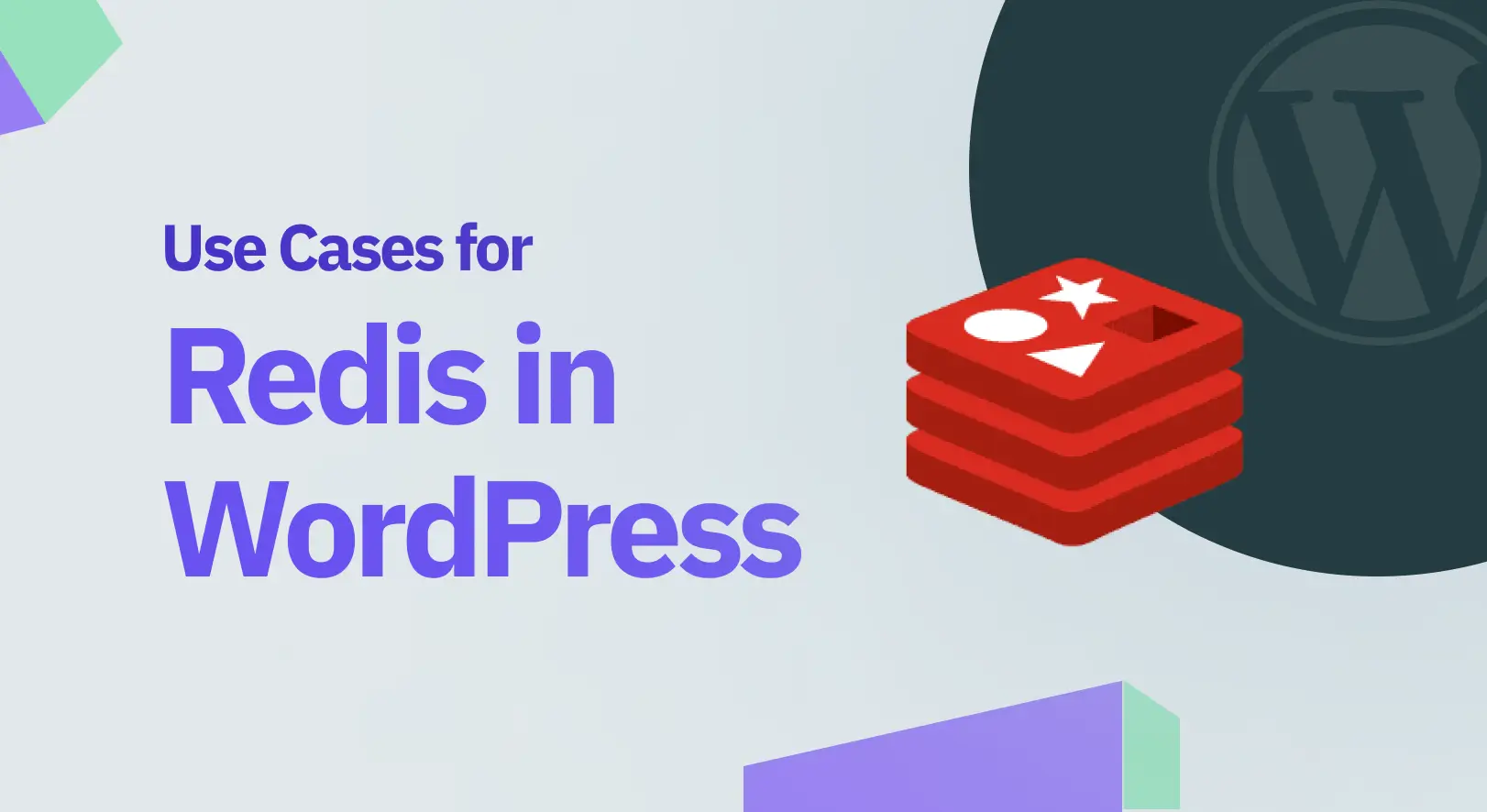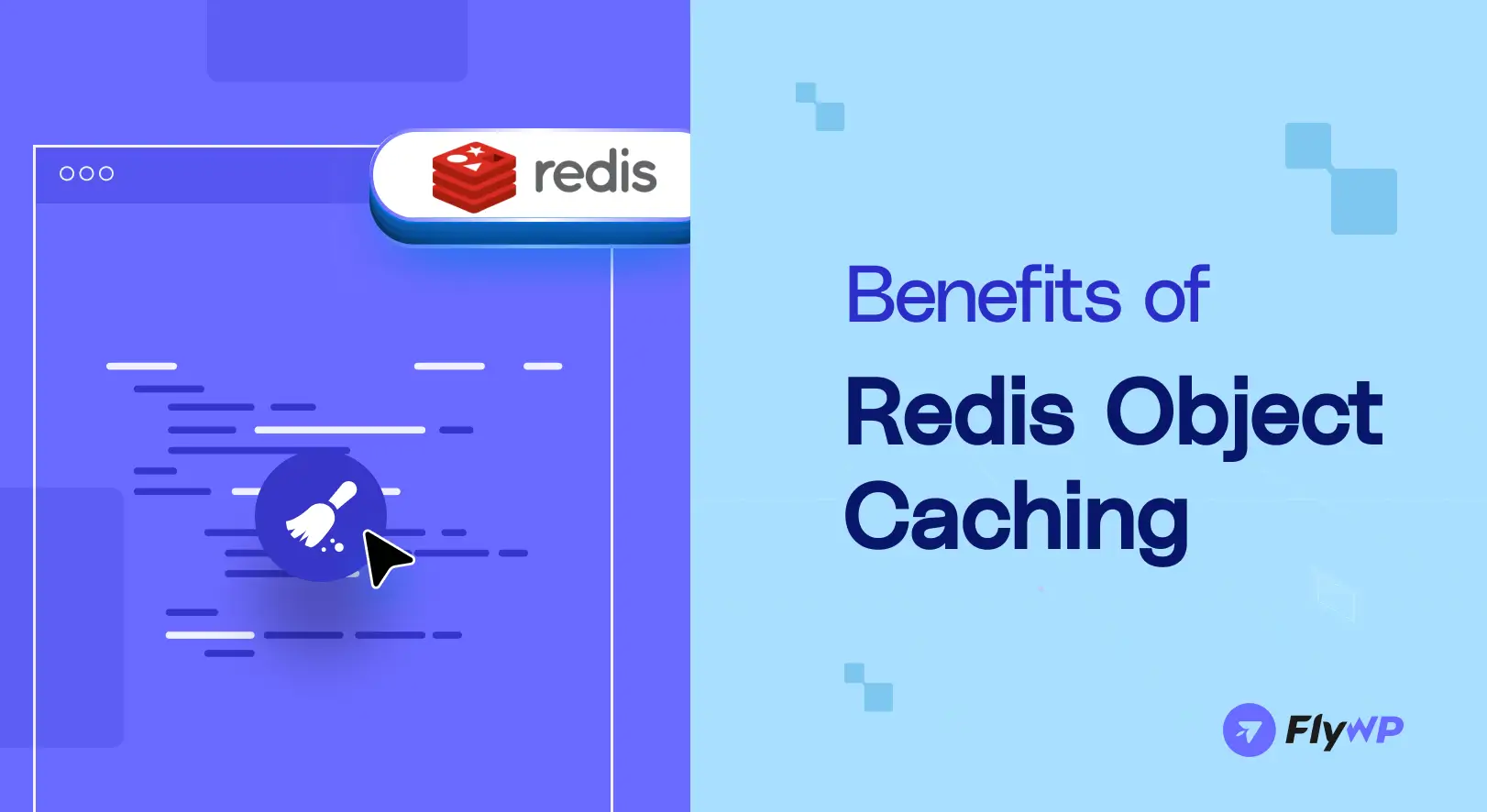Are you running your website or managing clients’ sites? Then, you must have encountered the problem of page loading speed at least once.
Slow page loading speed can frustrate potential visitors and harm your website’s performance. Hence, a sluggish WordPress site can create problems like higher bounce rates, lower search engine rankings, and lost opportunities.
One key reason for slow page speeds is frequent database queries that consume data and delay loading times. This is where caching comes in. Caching temporarily stores frequently accessed data and reduces the need for repeated database calls.
Unlike traditional caching, Redis Object Caching is a powerful feature. It is an in-memory caching solution. Popular websites like Pinterest, GitHub, and StackOverflow use this type of object caching solution.
In this blog, we will cover what Redis object caching is and its benefits for your WordPress site.
What Is Redis Object Caching?
In simple words, Redis object caching is a technique that temporarily stores your site’s frequently accessed data or objects in its main memory (RAM). It allows fast retrieval of data. This technique is usually employed to improve application performance by reducing time and resources. It’s also known as the NoSQL database.
This is a server-side caching process, meaning it will be performed on your website’s server, not the user’s browser. It’s an open-source system and supports some advanced data structures. Also, you can shift to Redis Enterprise if your site is too big.
For WordPress performance optimization, it is the best object caching solution as it caches relation query results in no time.
For setting up Redis object caching on your WordPress site, you can start by installing a PHP extension, and then configure Redis Object Cach Plugin.
For more details, you can check Redis Object Cache: What is it and how to connect it with WordPress.
Key Features of Redis Object Caching

Redis object caching offers features that make it a powerful and versatile tool for improving a website’s performance. Here are some of the key capabilities that set it apart from other caching solutions.
In-Memory Storage
Redis stores data in memory, which makes it much faster than disk-based storage systems. With this caching technique, data is accessed in microseconds,
Data Structures
One of the best features of Redis is that it supports a wide range of data structures- strings, hashes, lists, sets, sorted sets, bitmaps, and more. This makes it flexible for more caching strategies.
Key-Value Store
Cached objects are stored as key-value pairs where every key is unique. The key makes data retrieval efficient and straightforward.
TTL (Time to Live)
Redis allows you to set an expiration time for cached data. This ensures that outdated or stale data is automatically removed or updated.
Here’s a guide on how to connect the Redis object cache with WordPress.
Comparison of Traditional Caching and Redis Object Caching
In this section, we have made a quick comparison table of traditional caching vs. Redis object caching, depending on features like speed, scalability, and handling of dynamic WordPress content.
| Feature | Traditional Caching | Redis Object Caching |
| Storage | File or disk-based | In-memory caching |
| Data Acess Speed | Slower due to disk I/O | Faster as it uses RAM |
| Data Structures | Basic key-value pairs | Basic to advanced structures |
| Scalability | Limited by disk performance | Scales horizontally with clustering capabilities |
| Dynamic Content Handling | Inefficient for frequent real-time updates | Optimized for dynamic and personalized content |
| Best Use Case | Static Content | Dynamic, user-specific, or real-time content |
What Are the Benefits of Redis Object Caching for WordPress Sites?

By configuring Redis object caching, you can achieve a more responsive and scalable WordPress site, enhancing overall user satisfaction. Here are some key benefits of integrating Redis object caching –
Improved Page Load Time
Increasing page load time is a significant benefit of integrating Redis into your WordPress site. It stores frequently accessed data in memory, reducing the need for repetitive database queries. As a result, it leads to faster page generation.
Reduced Database load
As we have discussed, Redis is a server-side caching technique that uses its RAM to lessen disk storage load. It handles repeated query results, so it decreases strain on your database. It ensures efficient resource utilization, especially during high-traffic periods.
Enhanced Scalability
With Redis managing object caching, your WordPress site can accommodate increased traffic without compromising performance. This makes it ideal for dynamic sites with high user interaction.
Versatility & Simplicity
As we know, Redis supports a variety of data structures like strings, hashes, lists, sets, sorted sets, bitmaps, and more, it is compatible with multiple programming languages. As a result, it provides a straightforward caching solution adaptable to diverse application needs.
Better WooCommerce Performance
WooCommerce heavily relies on database queries to show products, images, and carts. Redis caching ensures that this data is quickly available. It improves the shopping experience and reduces cart abandonment rates.
Enhanced Admin Dashboard Speed
WordPress admin dashboard generates numerous queries which results in decreasing load time. Redis helps speed up the dashboard’s load time by making backend operations like content updates, plugin management, and site customization more efficient.
Support for High-Traffic Website
Redis object caching technique is ideal for WordPress websites that handle high traffic, like WooCommerce sites, blogs, news portals, or membership sites. It ensures these websites remain fast and responsive even during peak usage.
Better Management of Dynamic Content
The Redis caching technique is perfectly suitable for WordPress sites that manage dynamic content like product pages, blog posts, or user-generated content. Redis supports scalable performance with features like in-memory data structures, persistence, and clustering. These features make it ideal for handling dynamic, user-specific content in high-traffic environments.
Use Cases for Redis in WordPress

In this section, we have listed some real-time use case of Redis object caching that highlights how it can dramatically enhance performance, reduce server load, and improve user experience on high-traffic or dynamic WordPress websites.
1. WooCommerce Stores
Redis caching is ideal for e-commerce sites. WooCommerce sites produce numerous queries for products, cart updates, and inventory checks. Caching these frequently requested data in memory, Redis significantly reduces the time needed to serve product pages and process checkouts. This results in less page load time, a smooth shopping experience, and fewer abandoned carts.
2. High Traffic News Portals & Blogs
News portals and blog sites are critical to handle caching as these sites have to manage dynamic content. Hence, Redis is highly preferable for these kinds of media sites. Its dynamic data handling real-time capabilities allow news sites to update live feeds or trending topics without delays. On the other hand, Redis enhances search functionality by storing frequently accessed results, which makes it an ideal tool for delivering relevant content instantly to users.
3. Membership Sites
Smooth session management and fast content delivery are essential for membership sites. With Redis, users will experience faster login times, seamless navigation, and consistent access to protected content even with high concurrent user counts. Redis ensures reliable handling of renewals, access updates, and real-time changes in membership status for subscription-based sites.
Speed Up Your WordPress Site with Redis Caching of FlyWP
FlyWP is a comprehensive server management solution designed specifically for WordPress. It comes with a powerful platform to manage, optimize, and monitor WordPress websites across various cloud servers. Its developer-friendly environment lets users enjoy a superb hosting experience with top-notch performance.
Redis Caching is a crucial feature of the plugin. It comes as default with the system. In addition to this, FlyWP provides full-page caching, further optimizing the WordPress website. Let’s explore FlyWP by clicking the button attached below.
Wrapping Up
So, we have come to the conclusion, and no doubt, Redis Object Caching is the game-changer for the fastest page loads and to lessen server load. From eCommerce stores to membership sites to high-traffic news portals and educational platforms, Redis ensures that your site remains fast and reliable, even in high-traffic situations.
If you’re looking for an easy way to use Redis caching on your WordPress site, FlyWP makes it simple. From the FlyWP dashboard, you can easily enable Redis caching with just one click – no hassle for complex installation or configuration processes.
